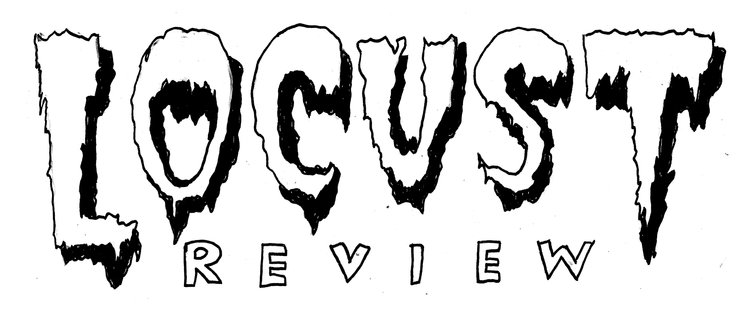There is one form of the Romantic culture that does not advocate the return to the past, but a detour by the past, towards an emancipated future. This we call revolutionary Romanticism, which begins with Rousseau, followed by Blake, Shelley, William Morris and many others.
The default cultural logic of neoliberalism and the political center is capitalist realism. In response the cultural logic of working-class emancipation (socialism) is critical irrealism. The ir – or no – of critical irealism is opposed to a particular kind of realism. Therefore, we should examine it more closely.
The following essay was written in February of 2020, for the website of left-wing arts and culture publication Red Wedge magazine, not long before its activity ceased and former editors moved on to other projects, including Locust Review. We post it here in an effort to give readers a sense of LR’s roots, the artistic and political questions that we have sought to answer, and the bearing they have on those being taken up by the Locust project. In the coming weeks, we will also be publishing a selection of Red Wedge’s best material.
The Theatrical Party embraces the organization of pessimism in contrast to the false optimism of the left. To be a revolutionary pessimist is to separate the political actor from their role. It is this separation which, in the epic theater of Brecht, invited a critical outlook on the performance from its participants and spectators — the first step in the transformation of spectators into collaborators, a task integral to both theater and the forging of a revolutionary party.
We want a record of the real in the work — as in the cotton and ash — as well as reclamations of our history and imaginaries constructed against the limits of working-class imaginations by capitalist realism. So the individual pieces are sort of vignettes of class pathos and poetry, often in an irreal idiom, and all together representing, as much as we can, the limitless expansive nature of these stories in aggregate.
The Irrealist Combat League is for the construction of performances — for aberrant departures from the motions of everyday life, for the active imposition of proletarian will on space and time, for the enrichment of the political-imaginative capacity of the revolutionary class.
Many of the best Marxist cultural interventions come from an intersection of Marxism and the Romantic/Gothic, either intentionally, or among Romantics moving into Marxism (even as they reject the Romantic),12 imparting a kind of working-class messianism. Because art cannot change the world — only the class can do that — this messianism often takes on a displaced character. Aaron to Moses. John the Baptist to Christ. Bodhisattva to Buddha.
In the face of this, appeals to normality are, in essence, the toxic optimism of American exceptionalism, the belief that America is somehow above time, above consequence. And though the reality of President Joe Biden has breathed some new life into this myth, make no mistake, it nonetheless wobbles like a drunk trying to walk a tightrope.
A single mother is driving past an abandoned factory on her way home from a low paying job. She is hungry. Above the factory a billboard floats in the sky advertising a succulent feast. But it does not strike her — or us — that this is odd, that her hunger has manifested itself above the factory ruin in an image of unavailable food. When we step outside ideology we see this absurdism for what it is.
While the critical irrealist ties the emancipation of the constrained subject to a collective fight against the forces that constrain that subject, the fascist occultist seeks unity with the constraining forces. Each responds to the disfigurement of individual subjectivity under the “normal” workings of capitalism; each rejects, to some degree, the profound lack of imagination engendered by capitalist realism. How they are opposed, in irrealist cultural performances, gestures, artifacts and media, is largely in the different ways they position/construct/code subjectivity in relation to the sources of this disfigurement.
THE MICHELISTS, who renamed themselves the Futurians in 1939, were a group of mostly working-class and precarious middle-class science fiction (SF) fans, largely centered in New York, who, in the 1930s, aimed to take over SF fandom for Communism and the Popular Front.
Wandering through the areas of London – Marylebone, Stratford, Lewisham, Hackney Wick -- one gets the sense she is pensively but frantically trying to piece together a history-from-below of every street-corner and underpass. Her descriptions digress into memories, often several layered on top of each other, rabbit-holes within rabbit-holes: 1989, 1996, 2003, friends, strangers, acquaintances, piss-ups, drunken brawls, bonfires, people who fell in-and-out of love, bored afternoons, demonstrations and riots, previous drifts that will bring her back into the moment in front of her. “The polychromatic riot of London’s histories,” she says, “travel in shimmering, tangled lines.”
What the cosmos -- and space exploration -- were part of a great utopian impulse, positioned against war, against privation, and against death itself? What if this imagination was projected onto the surface of Mars instead of Elon Musk’s banal acquisitiveness? This is, in part, the history of Russian Cosmism, an esoteric philosophy that claimed not to be an esoteric philosophy, nurtured by a 19th century Moscow librarian named Nikolai Fedorov. He called it the philosophy of the Common Task. In the 20th century, cosmism would influence the early Soviet avant-garde, science fiction (SF), medicine, and rocket science, mingling with the revolutionary socialist impulses of Bolshevism and the October Revolution, before its eventual marginalization and repression following the Stalinist Thermidor
Rationality tends to be sutured to the concept of realism, so instrumental rationality in particular presupposes a proper epistemological mapping of the territory of “the real,” for the goal of controlling it. Mark Fisher’s idea of “capitalist realism” describes the totalizing phenomenon, that form of aesthetic and intellectual dominance.
To the fading and warping strains of Sammy Davis Jr.’s “Candyman,” the opening scene of the 2021 version of Candyman emerges with shadow-puppets, silhouetting a Black man being chased. A very aware little Black boy, named Billy, plays out this theme on the wall of his home in the Cabrini-Green projects of Chicago.
Tingle glosses past the wider implication of a spell that gives everyone exactly what they need when they need it, choosing only to say that it was banned for destroying the economy, upending governments, and ruining the game show industry.
The dominant UFO visitation myths echo popular occultism in capitalism. The individual is abducted or visited -- in a secular-but-not-secular epiphany -- enweirding their life with either trauma or good fortune, or both; even if the good and bad fortune is a mere valorization of the formerly discarded individual within a cruel social totality. This is the ufology of “normal’’ bourgeois capitalism; the kismet of the UFO encounter.
A massive crowd of mostly black-clad protesters faced off with an army of police in riot gear. As yet another tear gas cannister was fired, a bright spot of pink emerged on the front line. One single bright pink umbrella opened, defiant against the horde of jackbooted thugs. This was perhaps the beginning of the curiosity that was the Capitol Hill Autonomous Zone (CHAZ) alternatively known as the Capitol Hill Organized Protest (CHOP).


















